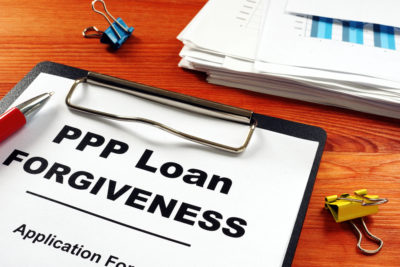This post was created with assistance from Washington Premier Group.
- Both chambers of Congress have passed the Paycheck Protection Program Flexibility Act of 2020 and the bill went to President Trump’s desk for his signature.
- The measure extends the Paycheck Protection Program loan forgiveness period from eight weeks to 24.
- The bill lowers the threshold created by the Small Business Administration guidance from 75 percent to 60 percent of the covered loan amount that must be used for payroll costs to receive loan forgiveness.
- The measure allows the loan repayment period to be extended from two to five years.
- Finally, the Act extends the Paycheck Protection Program’s safe harbor loan forgiveness deadline for rehiring workers from June 30, 2020 to December 31, 2020.
The Senate on Wednesday passed H.R. 7010, the Paycheck Protection Program (PPP) Flexibility Act of 2020. The bill, which passed the House last week on a 417-1 vote, was signed by President Trump on June 5, 2020.
While the measure will provide greater flexibility to small businesses that have received forgivable loans under the PPP, Senate Majority Leader Mitch McConnell (R-KY) has stated that additional work will be needed on the program, indicating that Senate Committee on Small Business and Entrepreneurship Chairman Marco Rubio (R-FL) and Sen. Susan Collins (R-ME) will continue working on technical fixes to the PPP in the coming weeks. Chairman Rubio has expressed particular concerns about House Democrats’ decision to recess for the entire month, noting that the chamber’s recess could make a legislative fix to address additional technical errors more difficult.
Below, please find an overview of key provisions in the PPP Flexibility Act:
Extension of Loan Forgiveness Period:
- At present, PPP loan funds must be spent within eight weeks of a borrower receiving the loan.
- The PPP Flexibility Act extends this PPP loan forgiveness period from eight weeks to 24.
- However, the language allows PPP recipients receiving a loan before the enactment of the bill to elect the eight-week period.
Extension of Loan Repayment Period:
- Currently, the PPP offers two-year loan terms at a 1 percent fixed rate.
- The PPP Flexibility Act would allow the loan repayment period to be extended from two to five years. This provision will only impact borrowers whose PPP loans are disbursed after the bill’s enactment.
- Regarding existing PPP loans, the Act does not prohibit lenders and borrowers from mutually agreeing to modify the maturity terms of a covered loan.
Payroll Expenditure Requirement:
- Pursuant to a Small Business Administration (SBA) Interim Final Rule (IFR) issued on April 15, 2020 (85 Fed. Reg. 20811), the general allowable uses of loan proceeds restrict non-payroll expenses such as rent or mortgage payments to 25 percent of the overall PPP loan.
- The PPP Flexibility Act attempts to modify this requirement to provide greater flexibility at a new ratio of 40 percent on non-payroll expenses and 60 percent on payroll costs. However, the PPP Flexibility Act only modified the forgiveness provisions of the original CARES Act, not the general allowable uses of loan proceeds in the SBA IFR.
- The drafting of this provision may prove to be problematic for businesses seeking relief under the PPP.
The CARES Act created the PPP in two separate sections. Section 1102 delineates the parameters of the PPP loan program, including the allowable uses of loan proceeds, which include payroll, rent, utilities and interest on certain debt. Section 1106 established the parameters for loan forgiveness. Neither section requires that a certain percentage of loan proceeds be used for payroll.
The April 15, 2020 SBA IFR states that “at least 75 percent of the PPP loan proceeds shall be used for payroll costs.” Under the IFR, if a small business receives a $100,000 loan, but is only able to spend $60,000 on payroll, the small business appears to be required to return $20,000 to the lender because they cannot use the entire $100,000 for other allowable uses. The current IFR would not allow the small business to use more than $20,000 on other allowable loan uses, resulting in a loan of only $80,000.
The PPP Flexibility Act would amend Section 1106 of the CARES Act relating to loan forgiveness to provide that in order to receive loan forgiveness, 60 percent of the loan proceeds must be spent on payroll. The measure does not amend Section 1102 of the Act relating to the allowable uses of loan proceeds and thus does not alter the SBA’s regulatory requirement that 75 percent of the loan proceeds must be used for payroll.
If the Act remains in its current form and the IFR is not modified, PPP loan recipients will still be required to return loan proceeds to their lenders if they cannot use 75 percent of the proceeds on payroll. While the PPP Flexibility Act would ensure that a small business receiving a $100,000 loan would be able to receive forgiveness for a total of $80,000, it would not alleviate the need for the small business to return $20,000 of the original $100,000 loan if it can only use $60,000 for payroll to meet the IFR requirements for allowable uses.
Added Flexibility for Rehiring Workers:
Current guidance indicates that a PPP borrower’s loan forgiveness amount will be reduced if the average number of full-time equivalents (FTEs) during the related eight-week period is less than the average number of FTEs during the reference period chosen by the PPP borrower.
The PPP Flexibility Act stipulates that the forgiveness amount will not be reduced due to a reduced FTE count if the borrower can prove that they unsuccessfully attempted to rehire employees and hire “similarly qualified employees” prior to December 31, 2020. The measure also provides that forgiveness will not be reduced due to a reduced FTE count if the borrower can demonstrate that they were unable to return to the “same level of business activity” as prior to February 15, 2020 due to safety requirements.
The PPP currently includes a safe harbor for restoring average FTE and salaries/wages prior to June 30, 2020.
The PPP Flexibility Act extends this safe harbor deadline to December 31, 2020.
Extension of Loan Deferral Period:
At present, the PPP allows for a deferral of payments for a period of six months.
The PPP Flexibility Act would extend the PPP loan deferral period to the date on which the amount of loan forgiveness is remitted to the lender. If a borrower does not apply for forgiveness within ten months, they must begin to make payments.
Expanded Eligibility for Payroll Tax Deferral:
The CARES Act prohibited borrowers from taking advantage of the payroll tax deferral after a PPP loan was partially or completely forgiven.
The PPP Flexibility Act would remove this ban and allow all borrowers to be eligible for the CARES Act’s payroll tax deferral.
Timelines: The legislation pushes the PPP program’s expiration from Jun. 30. to Dec. 31.
What’s on the Horizon for the PPP?
Prior to Senate passage of H.R. 7010, Sens. Ron Johnson (R-WI) and Mike Lee (R-UT) — who had expressed concerns and opposition to the House-passed bill — secured a letter from key Small Business Committee members in both chambers clarifying that the intent of the legislation is not to reauthorize the program through the end of the year without additional reforms.
Small Business Committee Chairman Marco Rubio (R-FL) and Sen. Susan Collins (R-ME) have also indicated they are working on a technical change to the legislation that would ensure business can have their loans forgiven in some form regardless of whether they reach the 60 percent threshold. Additionally, there has been a bipartisan push in Congress to expand PPP eligibility to 501(c)6 organizations and other currently ineligible nonprofits in the next round of COVID-19 relief legislation.





